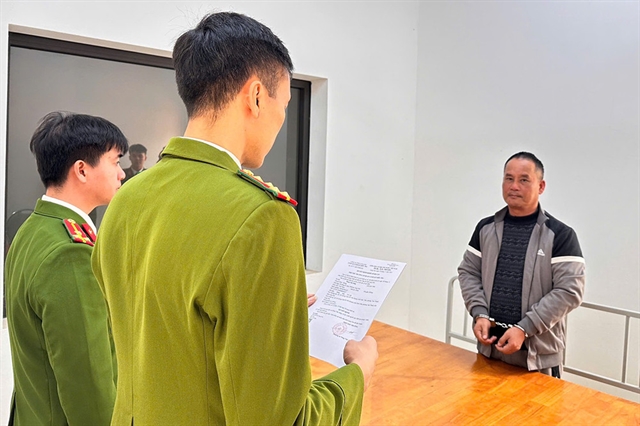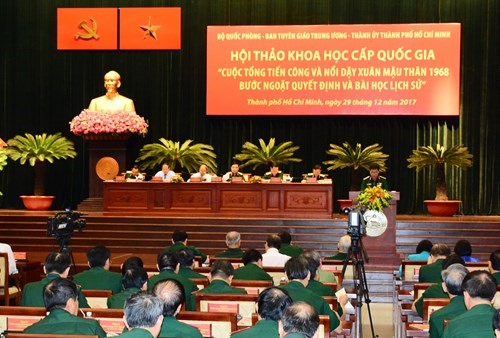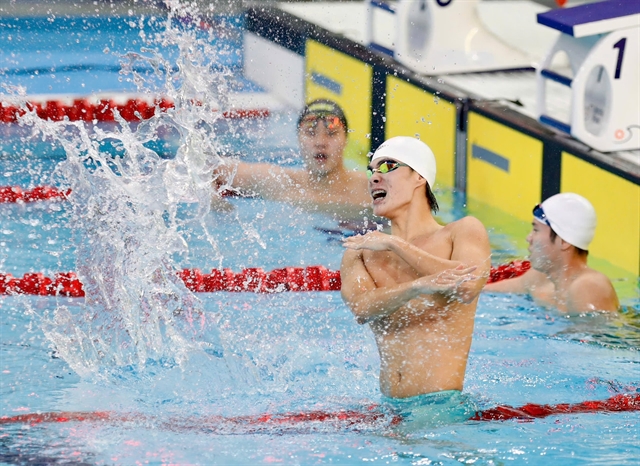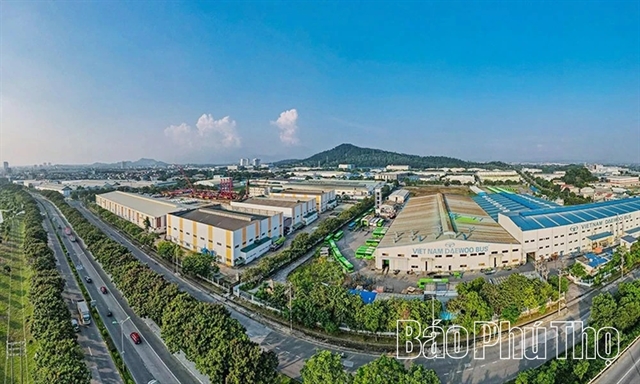 Society
Society

The General Offensive and Uprising in the spring of 1968 gave the Vietnamese people valuable lessons, confirmed the creative leadership of the Party and President Hồ Chí Minh and its determination to defeat American invaders, liberated the South, and unified the country and the Party, the army and people.
 |
| Delegates attend a meeting to mark the 50th anniversary of the General Offensive and Uprising in the spring of 1968 in HCM City yesterday.— Photo qdnd.vn |
HCM CITY — The General Offensive and Uprising in the spring of 1968 (Tết Offensive) gave the Vietnamese people valuable lessons, confirmed the creative leadership of the Party and President Hồ Chí Minh and its determination to defeat American invaders, liberated the South, and unified the country and the Party, the army and people, a senior Party official said at a meeting to mark the 50th anniversary of the historic event in HCM City yesterday.
Speaking at the national workshop “The General Offensive and Uprising in the Spring of 1968: Significant Milestones and Historical Lessons”, General Ngô Xuân Lịch, member of the Politburo and Minister of Defence, said: “The general offensive was a strategic victory for the Vietnamese revolutionary, a symbol of unyielding will and the aspiration of peace of the whole nation, which expressed the art of the Việt Nam Revolutionary War. It was a heavy defeat for the Americans and their henchmen.”
“This workshop is a chance to remind everyone about the heroic history and the determination of our people’s struggle for peace, independence and unity in the resistance war against the American invaders. At the same time, it helps to deepen historical and practical value as well as lessons learned in the cause of national construction and defence in the new situation,” he added.
Senior Lieutenant General Lê Chiêm, Deputy Minister of Defence, said: "The victories of the General Offensive and Uprising in the Mậu Thân Lunar New Year in 1968 became a symbol of a fighting and winning determination and fierce bravery and desire for peace and independence of the entire nation, expressing the great creativity of the Vietnamese people in the Hồ Chí Minh era.”
This victory shook the American imperialists, forcing the US to scale down the war, opening opportunities for the next attack, culminating in the Great Victory in the Spring of 1975, ending the war against the Americans, rescuing the country, liberating the South and reuniting the country, he added.
Speaking at the seminar, Senior Lieutenant General Nguyễn Trọng Nghĩa, Deputy Head of the Political General Department of the Việt Nam People’s Army, said: “Speeches and presentations at the workshop have clarified and deepened theoretical and practical issues from the General Offensive and Uprising in the Spring of 1968.”
Secretary of the HCM City’s Party Committee, Nguyễn Thiện Nhân, emphasised that the offensive created a "revolution of the people of the South and a period of attack and uprising to win the decisive victory”.
“Through this event, the necessity and effectiveness of the Sài Gòn commandos, an innovative method of combating the military in the city, were confirmed along with the patriotism of the Southern people and Sài Gòn - Gia Định residents.”
“Patriotism, the strength of great national unity, and the strength of the Vietnamese people should be promoted in every stage of national development,” he added.
Nhân affirmed that following the heroic tradition of the offensive, today’s generation is determined to promote historical values and good qualities of the Vietnamese people as well as dynamic creativity and take responsibility for promoting comprehensive reform.
The seminar received over 100 presentations on the main themes, including the general offensive as a creative initiative of the Party and President Hồ Chí Minh; the determination to win the war; the spirit of great sacrifice; the aspiration for peace and reunification of the whole Party and the whole army and all the people.
The victory of the general offensive in spring 1968 was of decisive significance, leaving lessons of theoretical and practical value and promoting the construction and protection of the country today.
During the general offensive, under a plan adopted by the Politburo and the Party Central Committee, Sài Gòn - Gia Định was the major focus because it was the headquarters of the command post, and the entire war administration of the United States and the South Vietnamese regime.
During the attacks, the forces simultaneously attacked the Independence Palace, Radio Station, General Staff and the Command Post, Naval Forces, Tân Sơn Nhất Airport, US Embassy, Tân Cảng, Naval Command, General Police Department, and the metropolitan area.
In the general offensive in 1968, the liberation armed forces attacked six major cities, 37 of the total 44 provincial towns and hundreds of district towns, four army corps, eight of the 11 divisions of the Saigon army, two special regions, two US field combat and many brigades, regiments and sub-region high commands, and hundreds of enemy military bases.
They wiped out and destroyed 150,000 enemy troops including 40,000 US troops, and destroyed 600 strategic hamlets and liberated another 100 communes with a population of 1.6 million.
The sudden attack of our troops and people won a great victory, both politically and militarily and diplomatically, with important strategic significance: turning the war; destroying the "local war" strategy; forcing the American imperialists to change their military strategy and to stop bombing the North and accept negotiations at the Paris Conference on the restoration of peace in Việt Nam. — VNS




